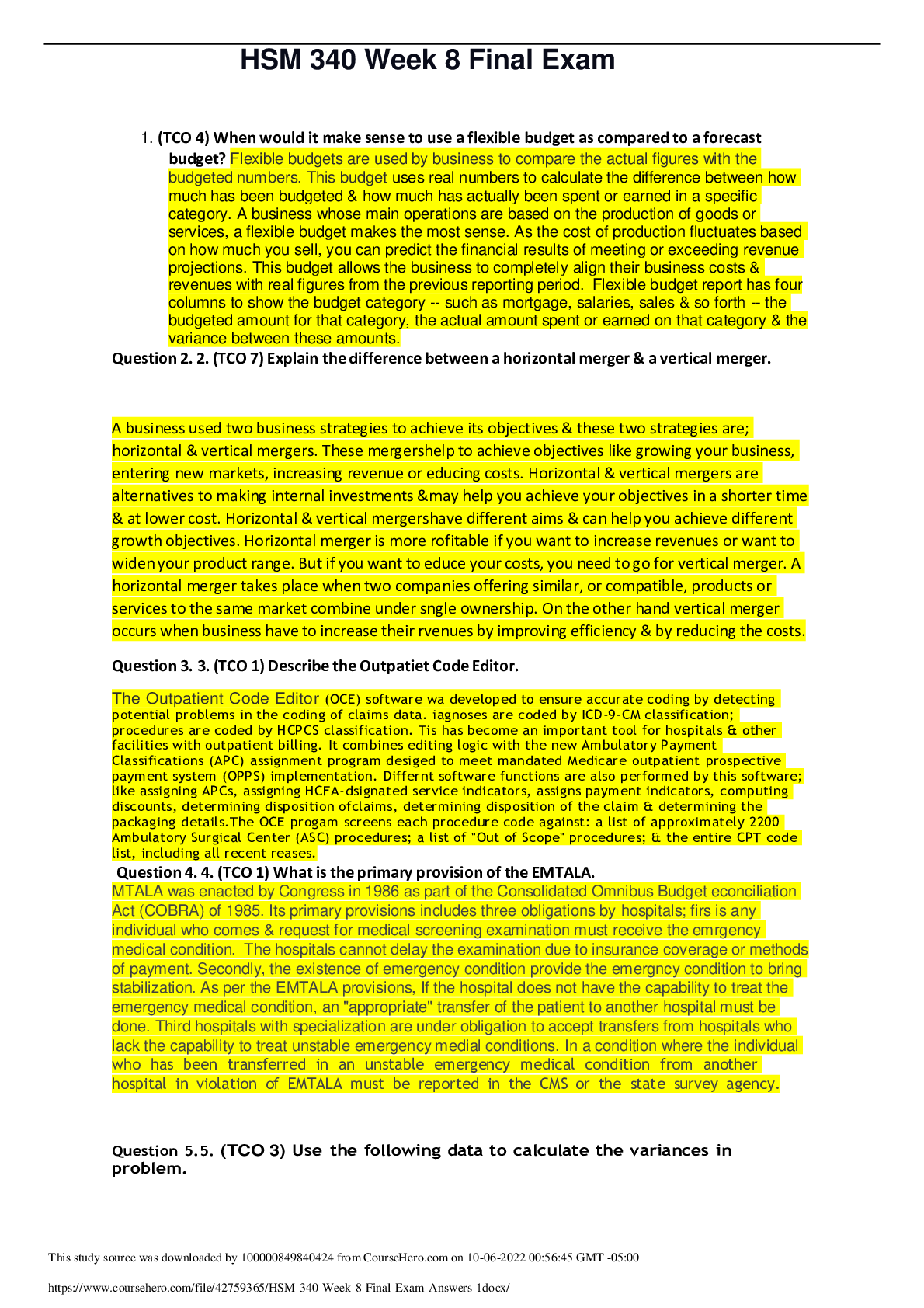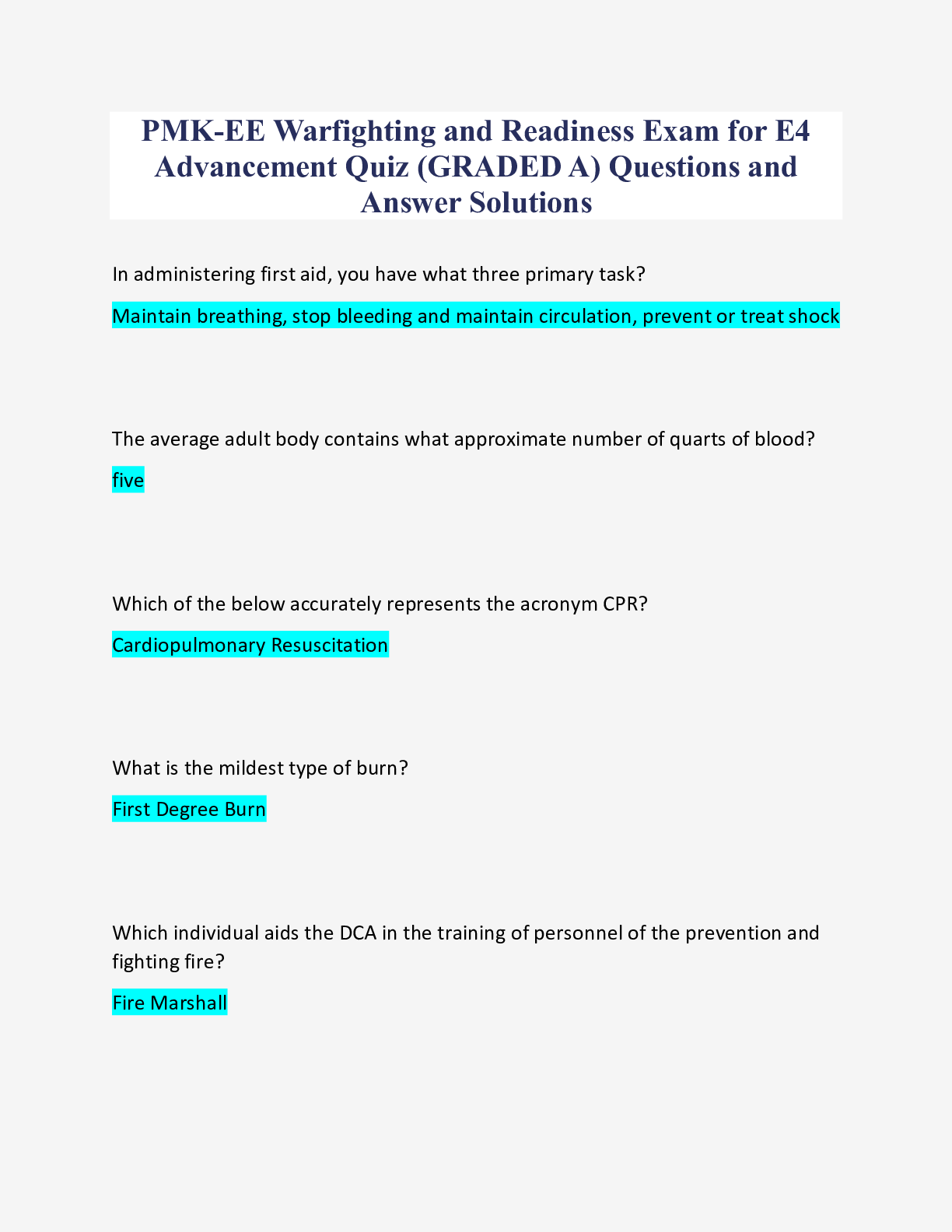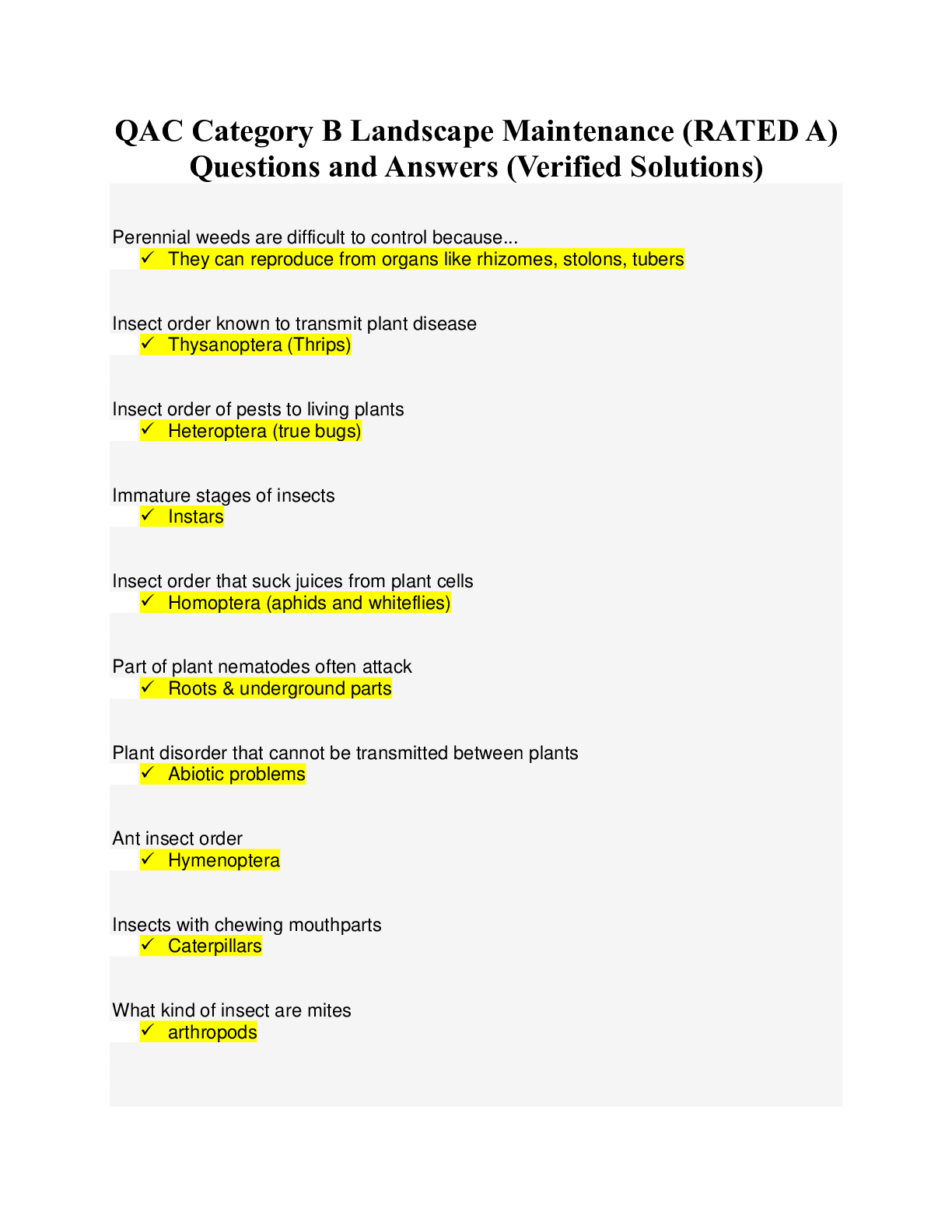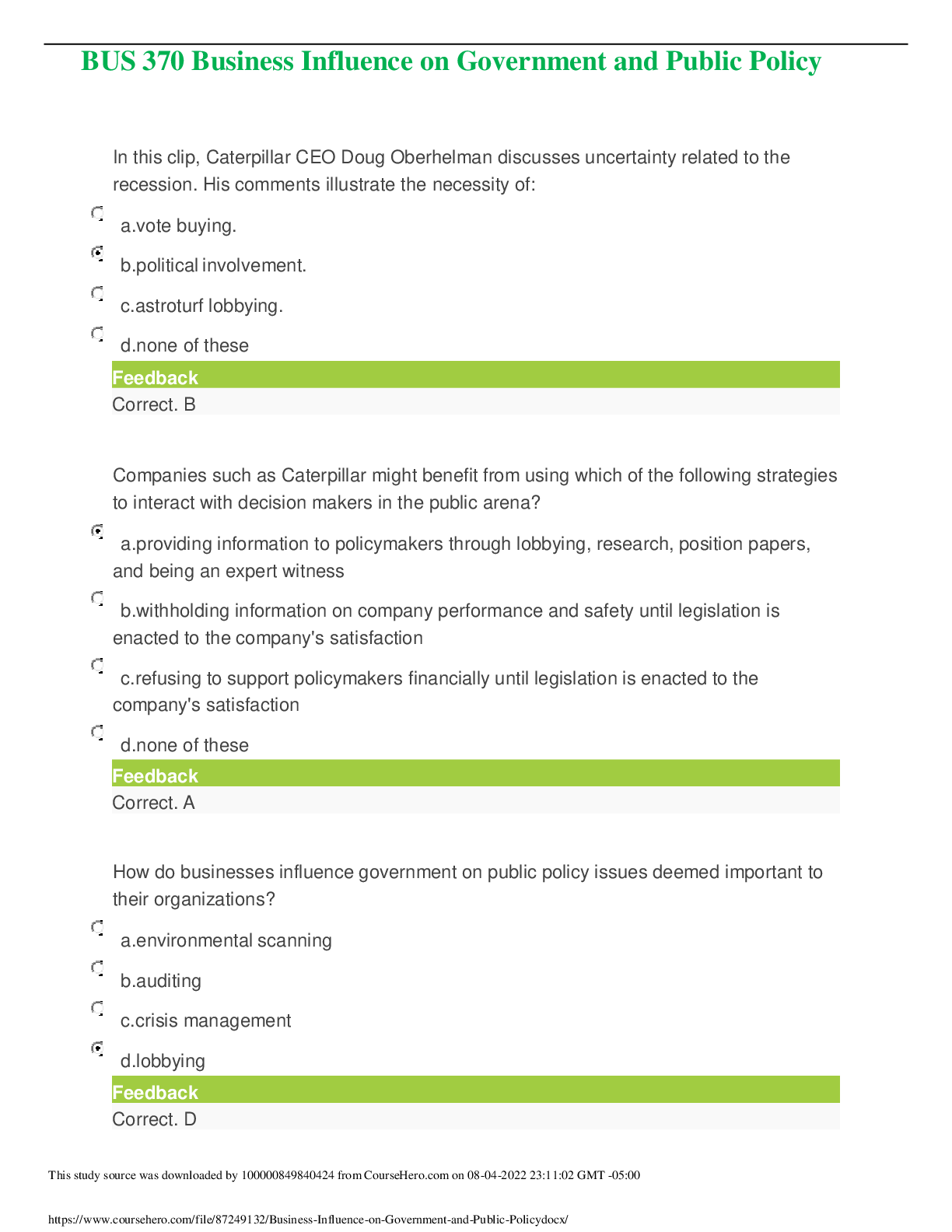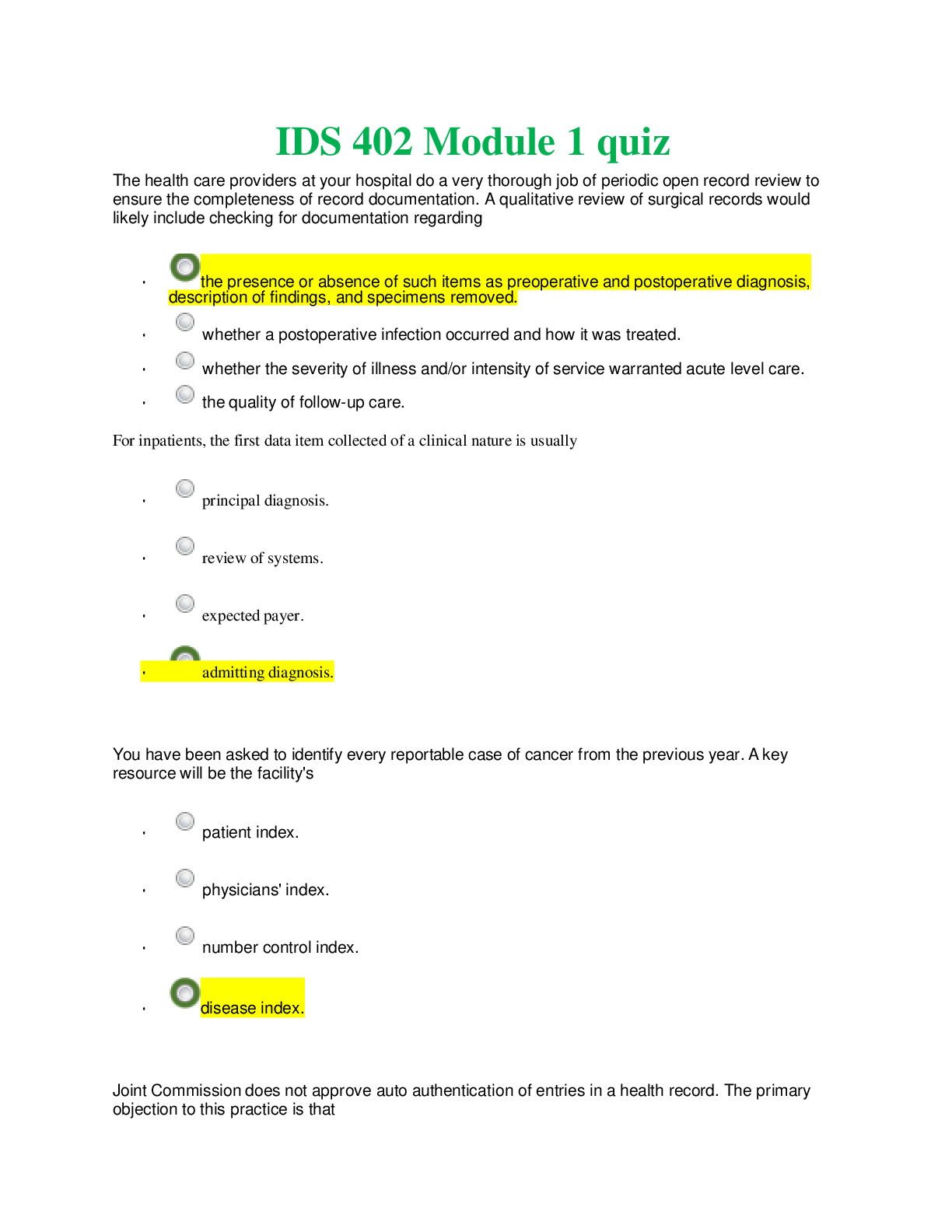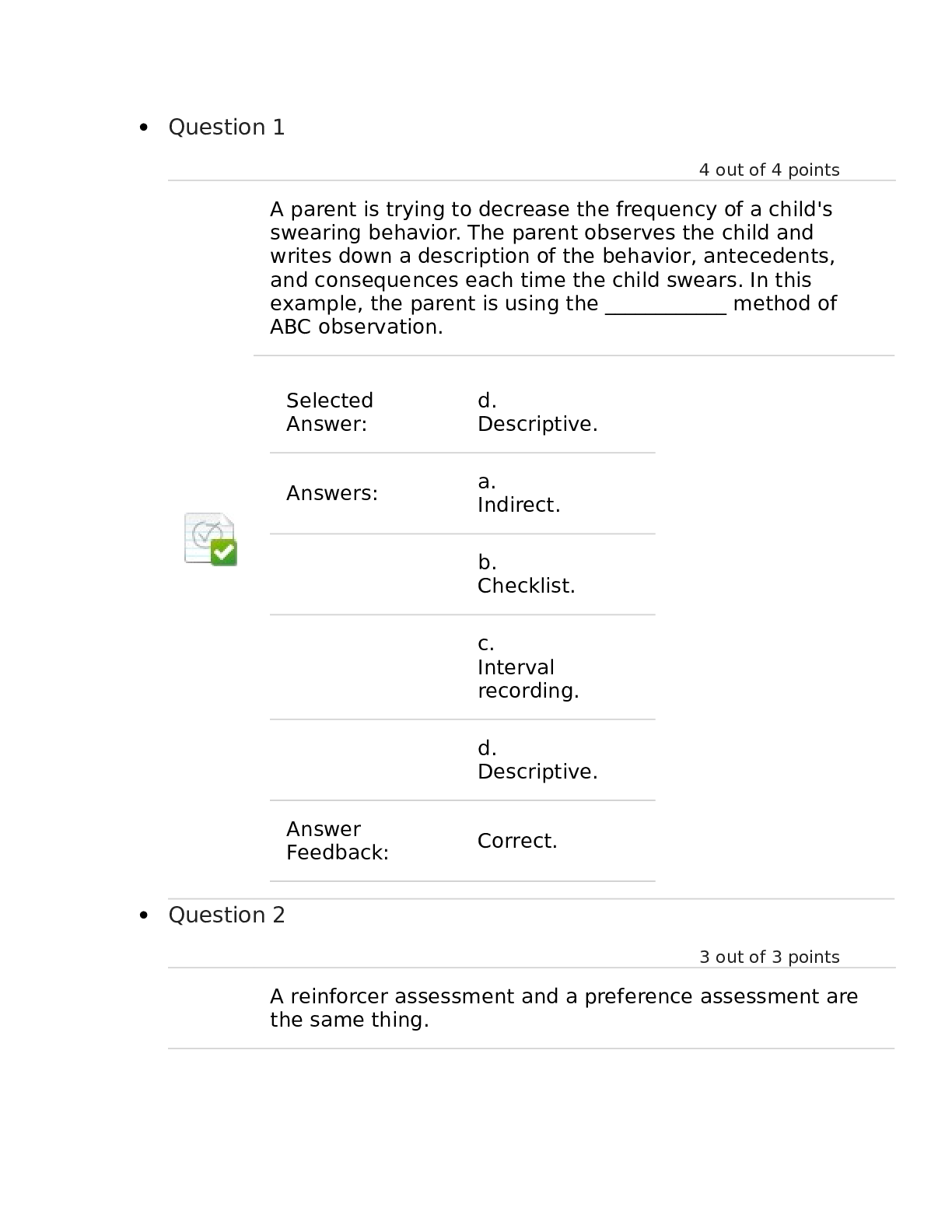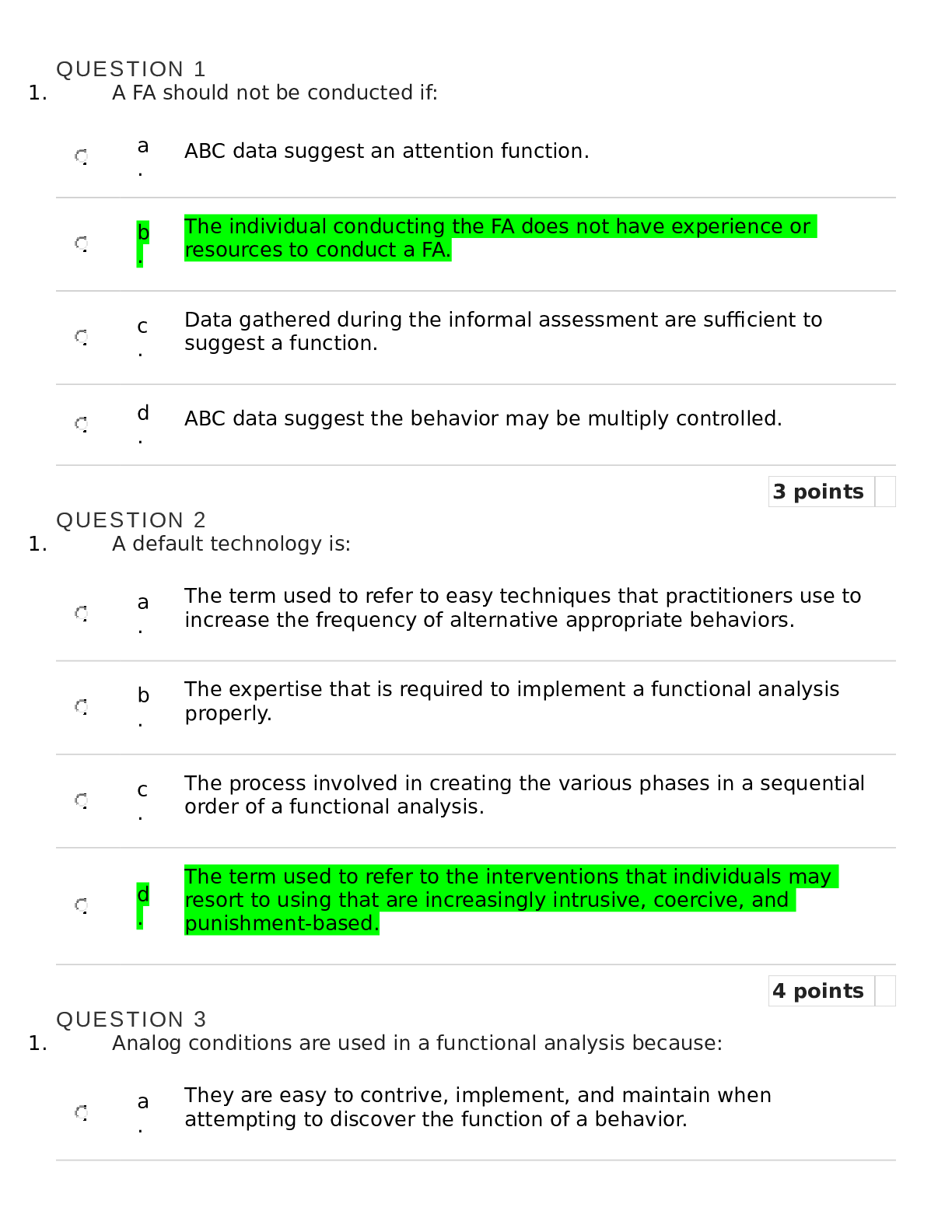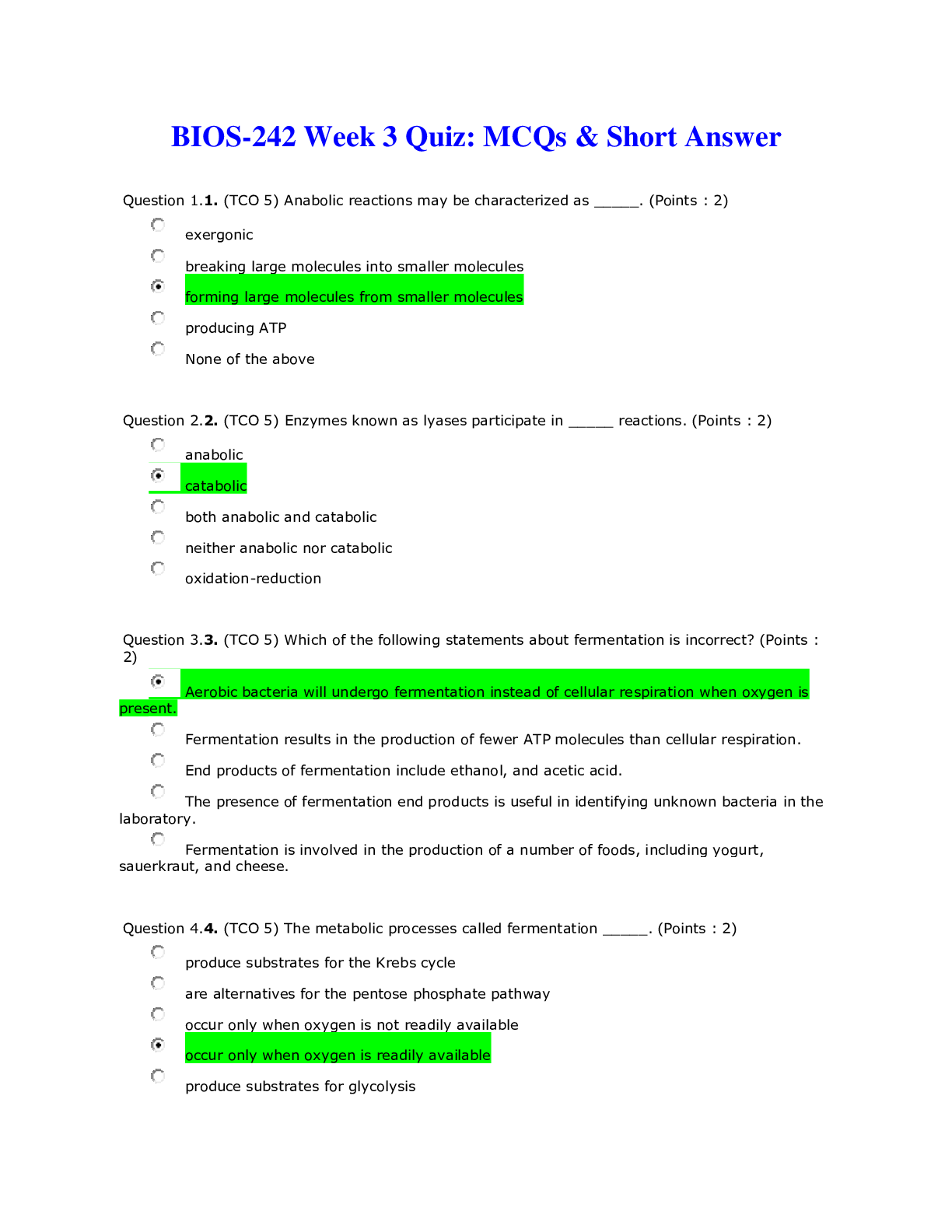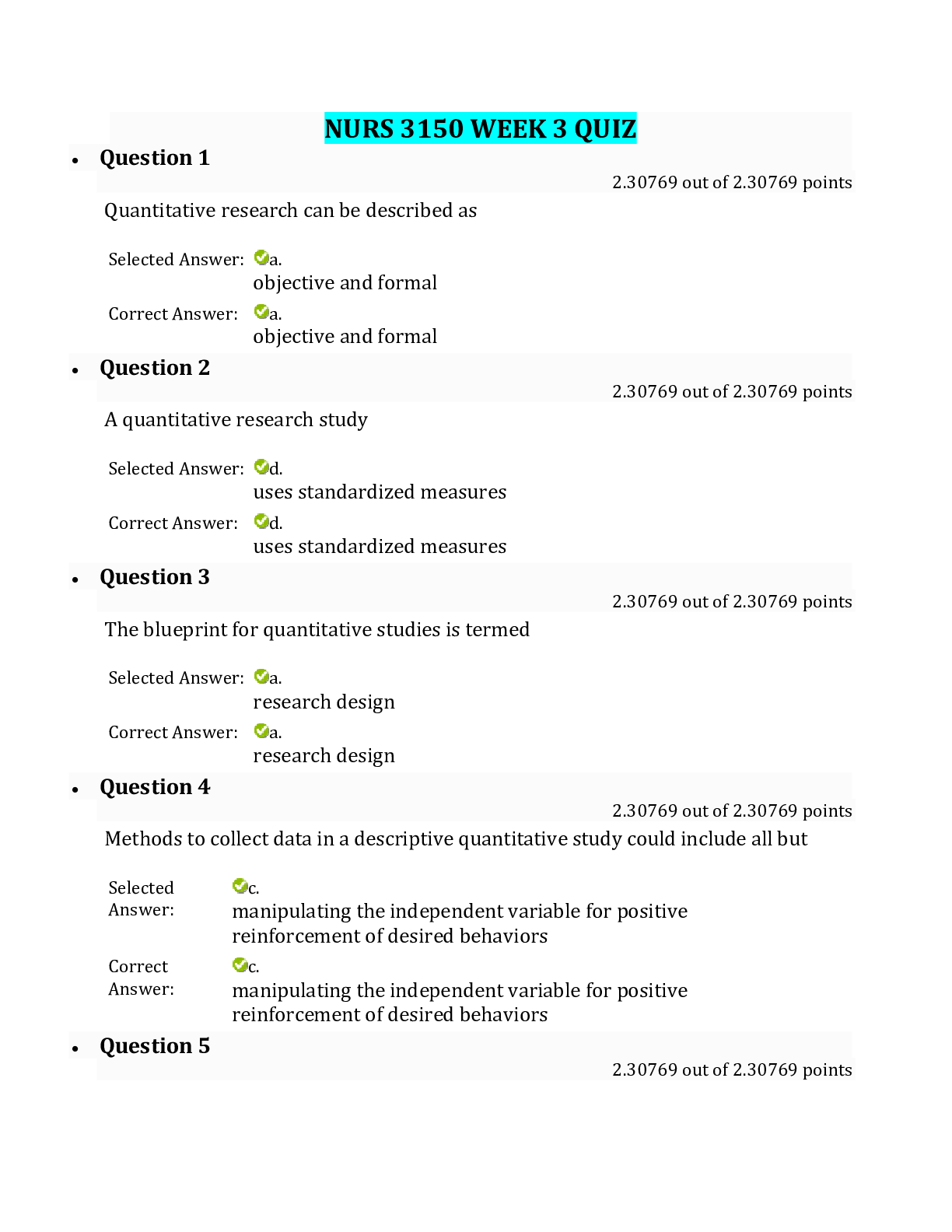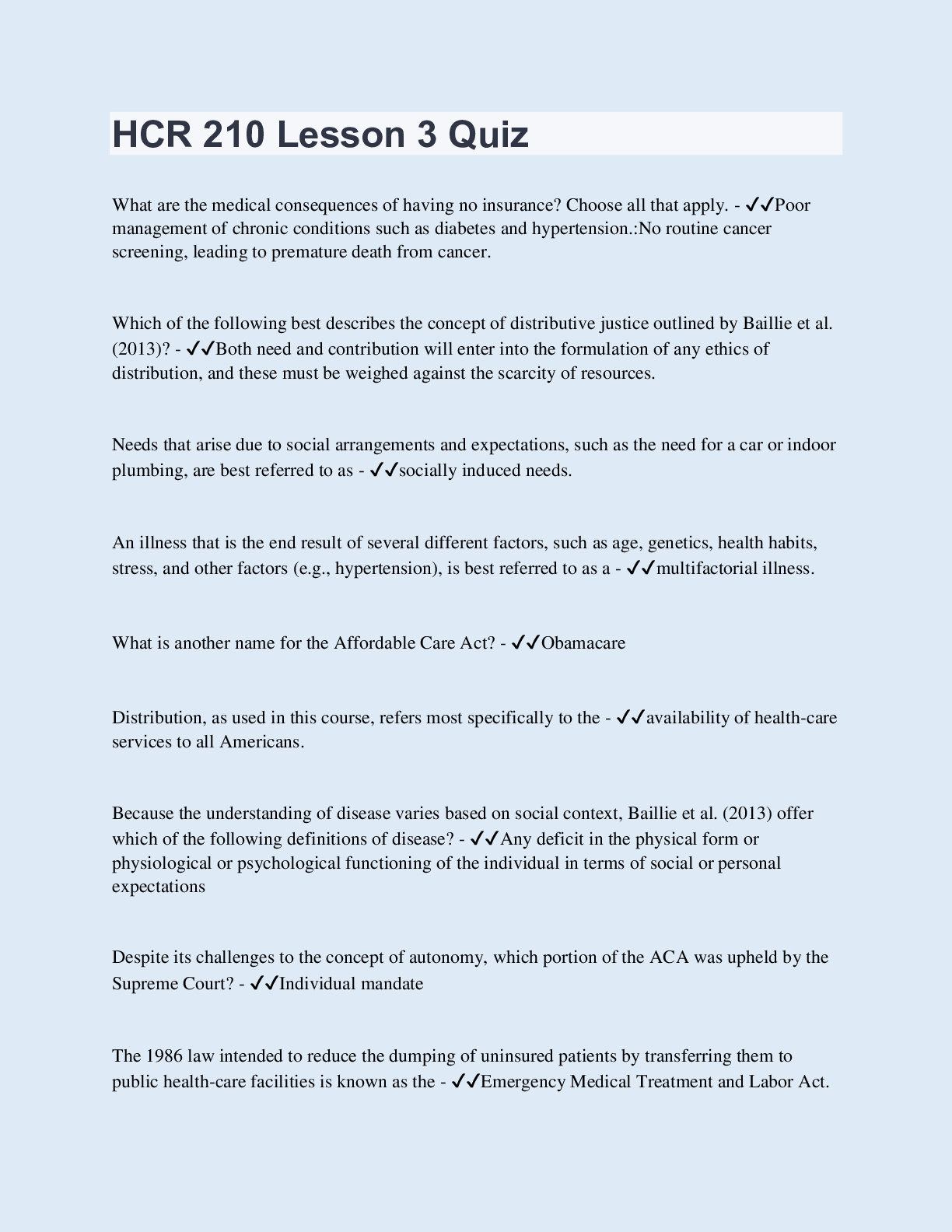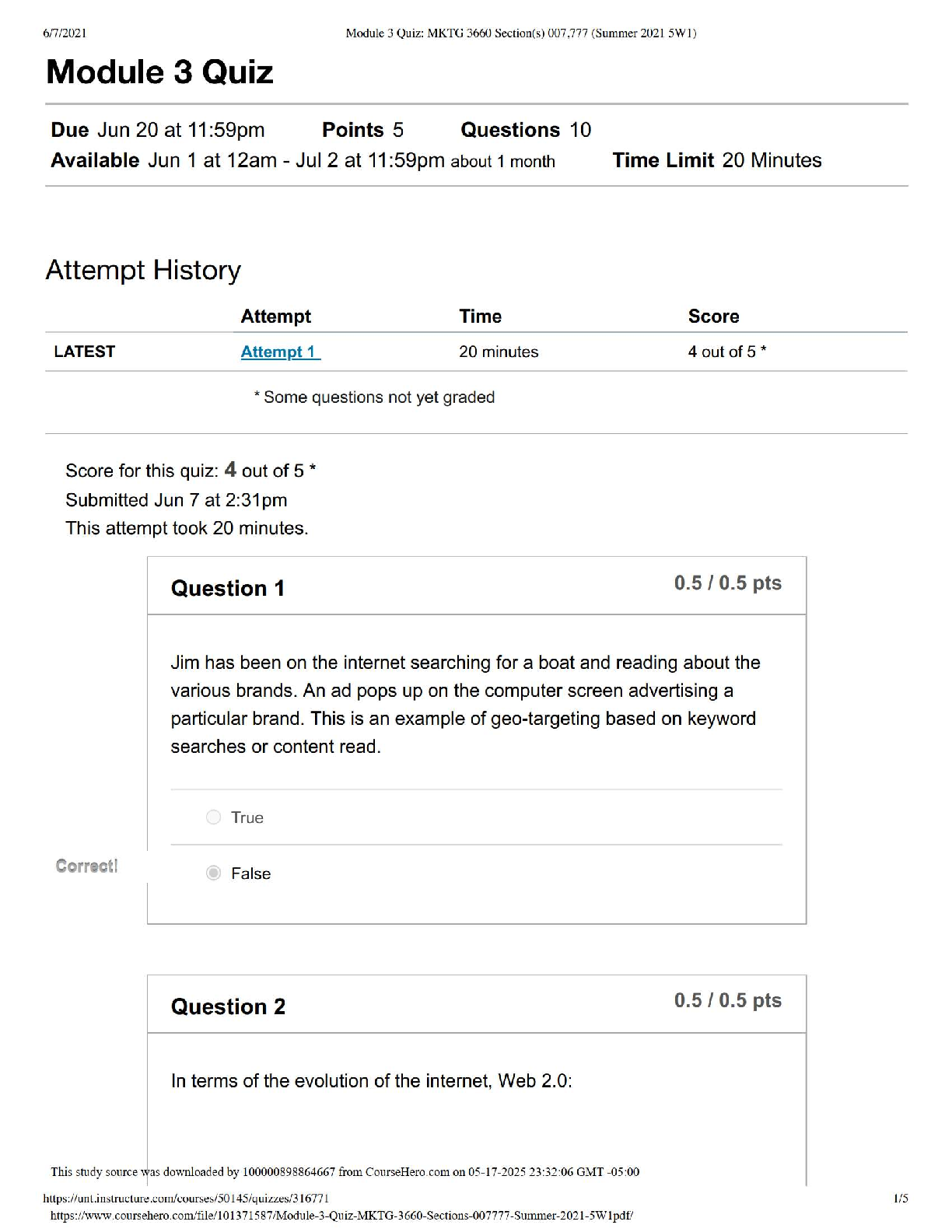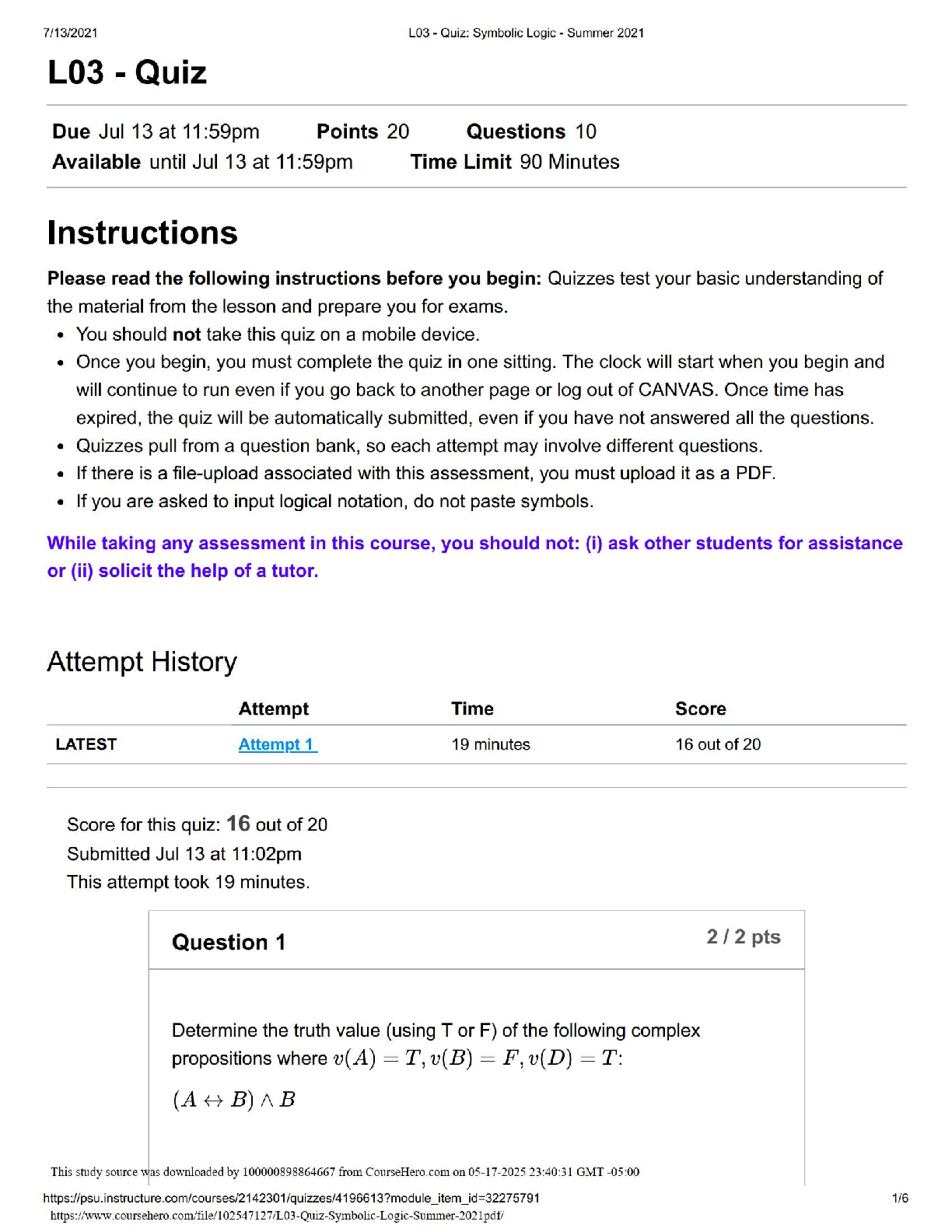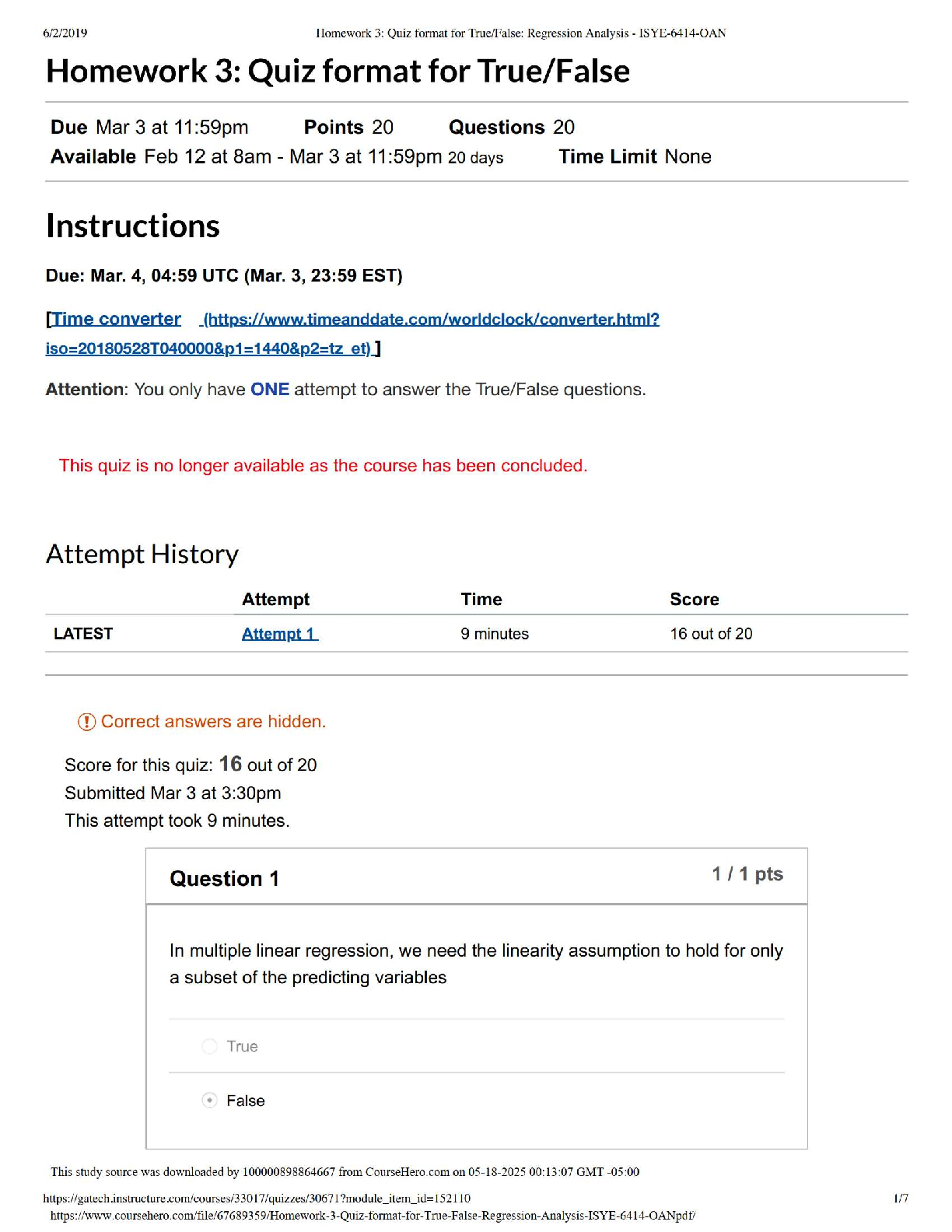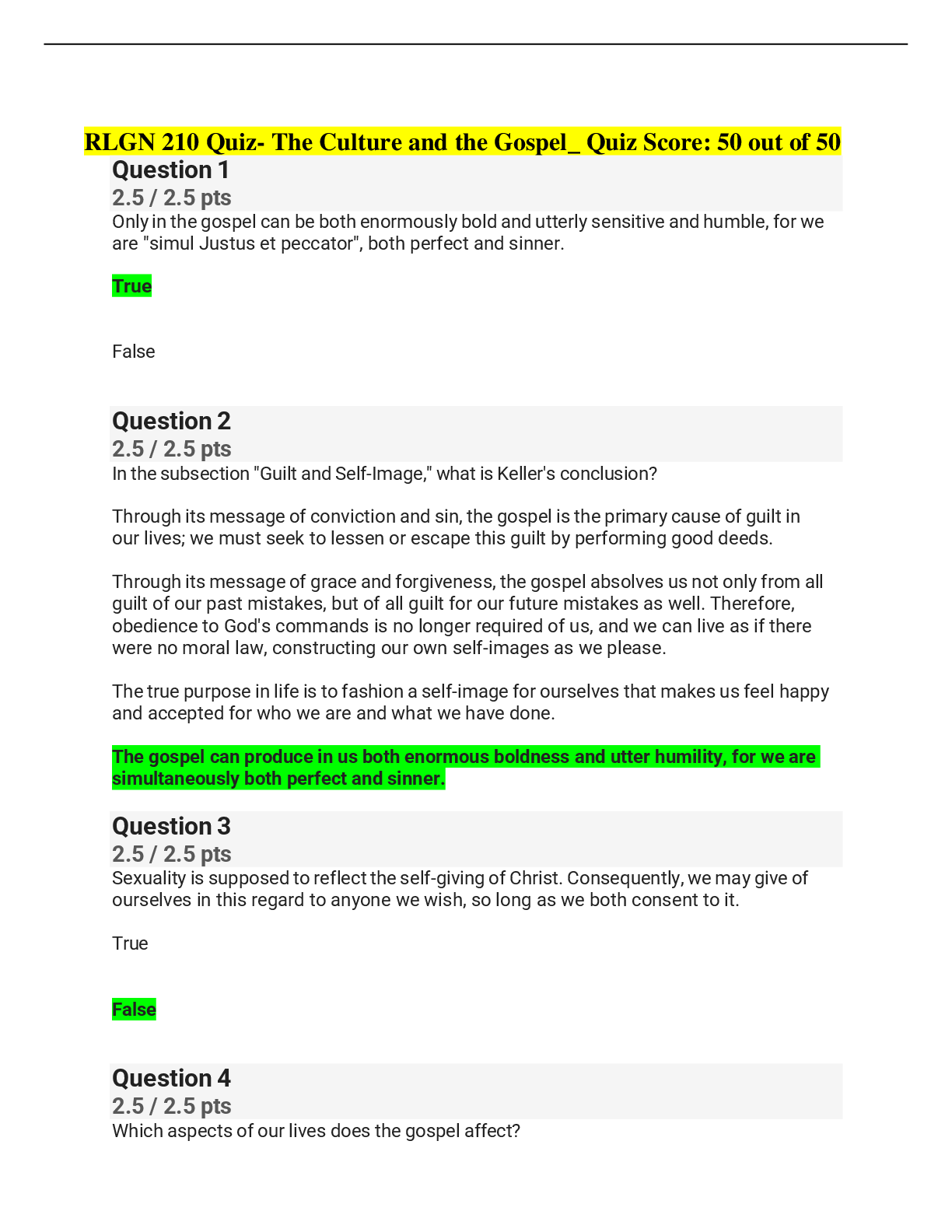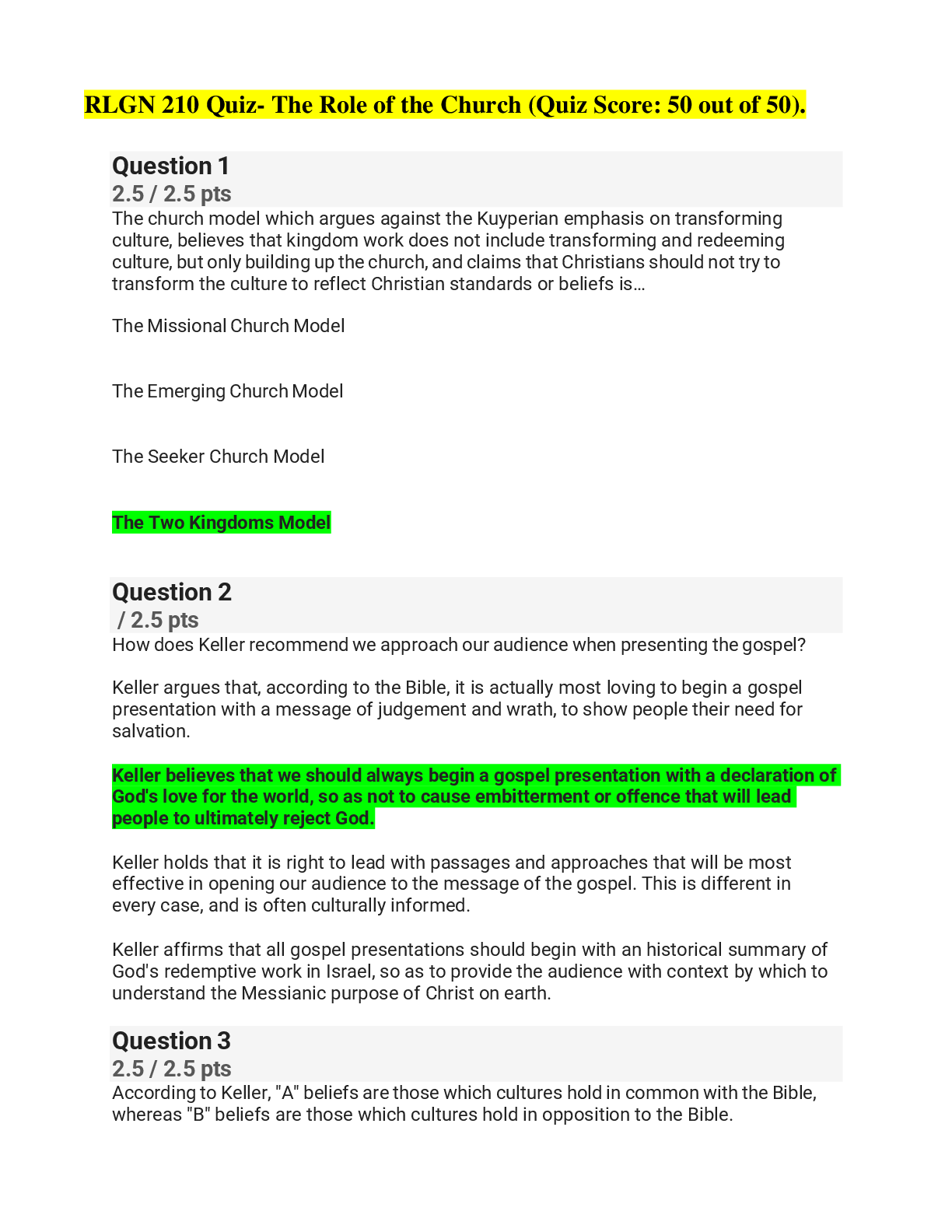Health Care > Quiz > HSM-340 Week 3 Quiz | 50 out of 50 | 100% correct answers (All)
HSM-340 Week 3 Quiz | 50 out of 50 | 100% correct answers
Document Content and Description Below
WEEK 3 HSM340 QUIZ • Due Sep 23 at 11:59pm • Points 50 • Questions 7 • Available Sep 16 at 12am - Sep 24 at 11:59pm 9 days • Time Limit 120 Minutes ... Instructions Here is some information about your Quiz. Welcome to the Quiz. • CO 3 will be covered. • Total points for the quiz is 50 and includes: o There are 4 Multiple Choice questions (5 points each). o There are 2 Short Answer questions (10 points each). o There is 1 Essay question worth (10 points). • You have 2 hours to finish the quiz. • Be sure to click SUBMIT when you are finished. Good job! By submitting this work, I am attesting that it abides by the Student Honor Code. This quiz was locked Sep 24 at 11:59pm. Attempt History Attempt Time Score LATEST Attempt 1 38 minutes 50 out of 50 Score for this quiz: 50 out of 50 Submitted Sep 23 at 5:46am This attempt took 38 minutes. (TCO 3) From a hospital's perspective, what is most likely to be the highest risk arrangement with a payer? DRG/Per Case Capitation Per diem Discounted charges none of the above. Chapter 14 (TCO 3) SKF Primary Care Clinic is deciding whether to purchase MRI equipment that would enable it to perform MRI imaging services in-house rather than sending its patients to its competitor's hospital three miles away. From a financial position, if SKF were to make its decision without using net present value analysis, the clinic would need to know (or at least reasonably estimate) which of the following information? Unavoidable fixed cost, volume, variable cost, and indirect costs Variable costs, volume, avoidable fixed cost, and total revenue Total unit cost, indirect costs, profit, and volume Revenue per unit, indirect costs, volume, and total revenue Avoidable fixed costs, revenue per unit, volume, and contribution margin Chapter 14 (TCO 3) Your controller has told you that the marginal profit of DRG 209 (major joint procedure) for a Medicare patient exceeds the marginal profit for an average charge patient. Why might this occur? High fixed costs of treatment Low Medicare payment High prices Low prices Chapter 14 (TCO 3) Which of the following is the first step in any budgetary process? Define standard treatment protocols Define required departmental volumes Define standard cost profiles Define volumes of patients Chapter 15 (TCO 3) David Jones, the new administrator for a surgical clinic, was trying to determine how to allocate his indirect expenses. His staff was complaining that the current method of taking a percentage of revenues was unfair. He decided to try to allocate utilities based on square footage of each department, administration based on direct costs, and laboratory based on tests. Use the information in the chart below to answer the question. Square Footage Direct Expenses Lab Tests Utilities 200,000 Administratio 2,000 500,000 Based on the scenario above, what are the Day Op Suite's total expenses? Your Answer: Total expenses would be $2,375,551 What are the Day Op Suite’s total expenses? $2,375,551 What are the Cystoscopy Department’s total expenses? $529,771 What are the Endoscopy Department’s total expenses? $469,678 (TCO 3) Your hospital has been approached by a major HMO to perform all their MS-DRG 470 cases (major joint procedures). They have offered a flat price of $10,000 per case. You have reviewed your charges for MS-DRG 470 during the last year and found the following profile: Average Charge $15,000 Average LOS 5 Days Routine Charge $3,600 Cost/Charge 0.80 Variable Cost % 60 Operating Room 2,657 0.80 80 Anesthesiology 293 0.80 80 Lab 1,035 0.70 30 Radiology 345 0.75 50 Medical Supplies 4,524 0.50 90 Pharmacy 1,230 0.50 90 Other Ancillary 1,316 0.80 60 Total Ancillary $11,400 0.75 50 The HMO in the above example has indicated that their doctors use less expensive joint implants. If this less expensive implant were used, your medical supply charges would be reduced by $2,000. What is the estimated reduction in variable cost? Your Answer: $2000.00 x .50 x .90 = $900 or $900= $2000 x .50 x .90 $900 = $2,000 × 0.50 × 0.90 (TCO 3) How are costs classified? Your Answer: Costs are classified by their trace-ability direct vs indirect, management controllable vs non-controllable, relation to budget budgeted vs actual, relation to time avoidable, sunk, incremental, and opportunity, and relation to activity fixed, variable and mixed. These classifications are used to improve the decision-making process by precisely defining cost to make it more relevant to make decisions. Regardless of the classification system in most situations, the total value of the cost is the same. In most cases different concepts of cost simply slice total cost in different ways.There may be underlying relationships among the various concepts of costs. For example direct costs and controllable costs may be related. In many situations there are standard rules that may be used to relate cost measures. Costs are classified by their traceability (direct vs. indirect), management control (controllable vs. non-controllable), relation to budget (budgeted vs. actual), relation to time (avoidable, sunk, incremental, and opportunity), and relation to activity (fixed, variable, and mixed). These classifications are used to improve the decision-making process by precisely defining cost to make it more relevant to decisions. Regardless of the classification system, however, in most situations, the total value of the costs is the same. Because, in most cases, different concepts of cost simply slice total cost in different ways, there may be underlying relationships among the various concepts of costs. For example, direct costs and controllable costs may be related. In many situations, there are standard "rules of thumb" that may be used to relate cost measures. Quiz Score: 50 out of 50 [Show More]
Last updated: 2 years ago
Preview 1 out of 7 pages
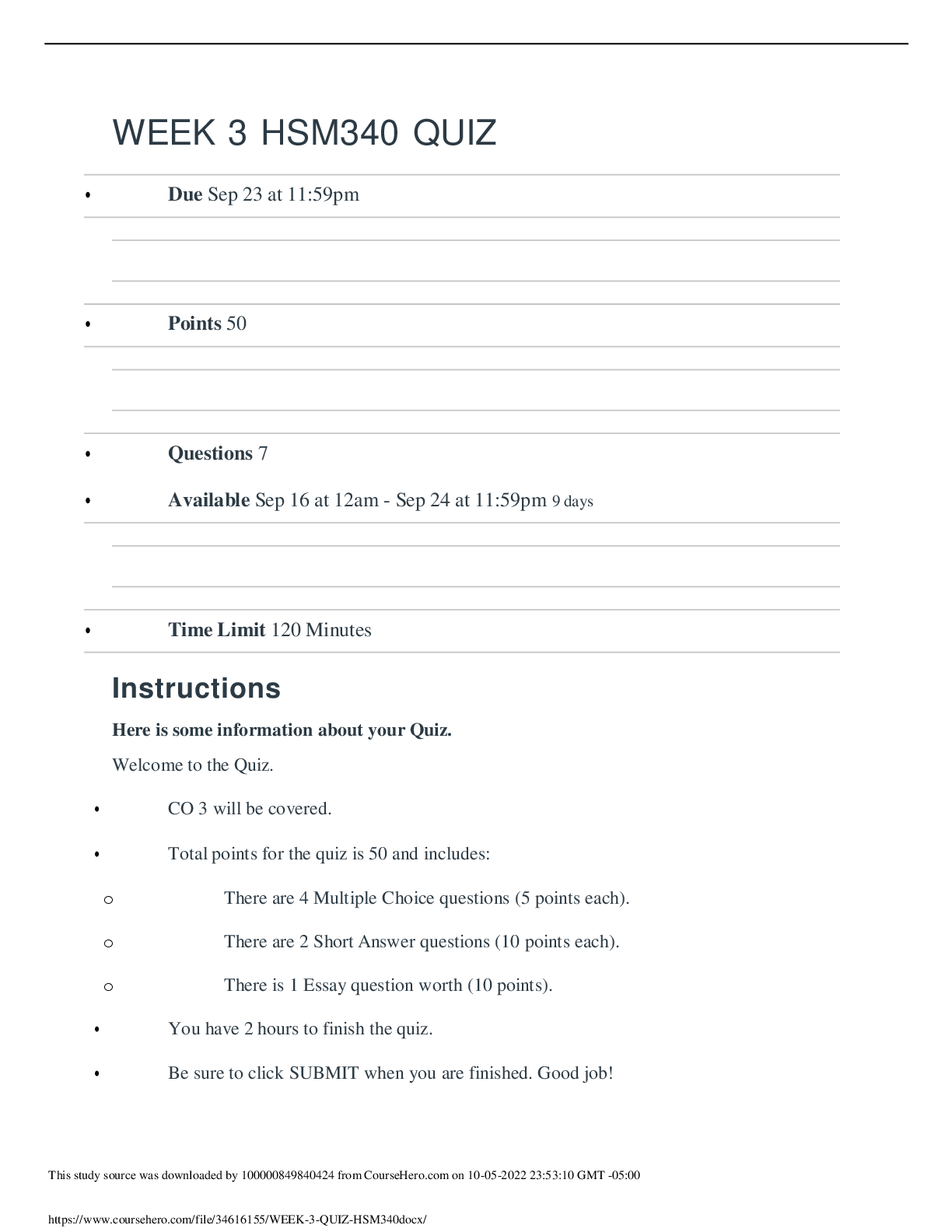
Buy this document to get the full access instantly
Instant Download Access after purchase
Buy NowInstant download
We Accept:

Reviews( 0 )
$11.00
Can't find what you want? Try our AI powered Search
Document information
Connected school, study & course
About the document
Uploaded On
Oct 06, 2022
Number of pages
7
Written in
Additional information
This document has been written for:
Uploaded
Oct 06, 2022
Downloads
0
Views
124
